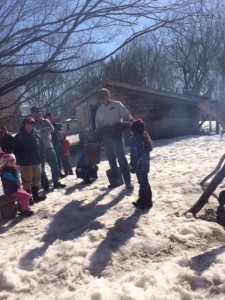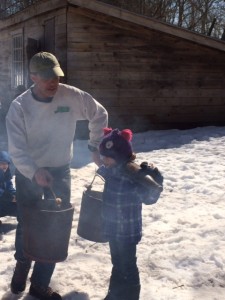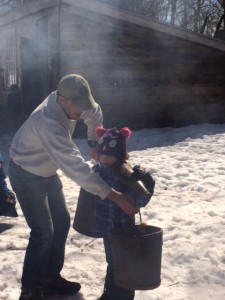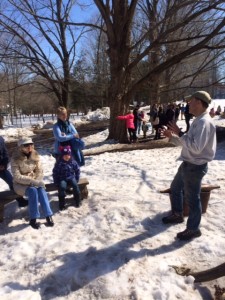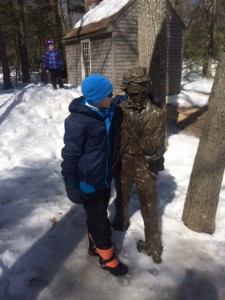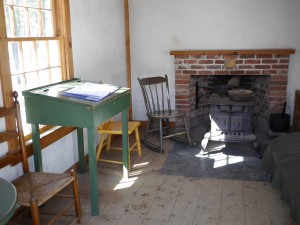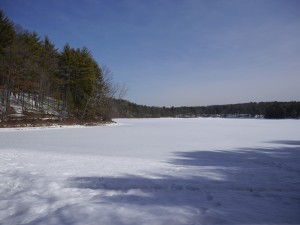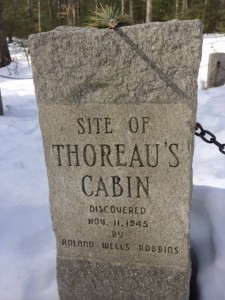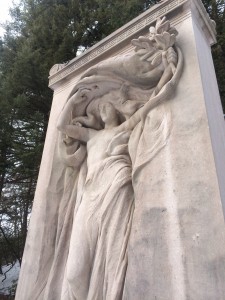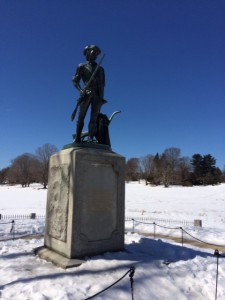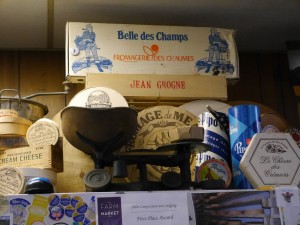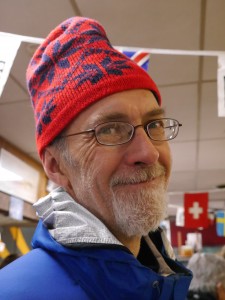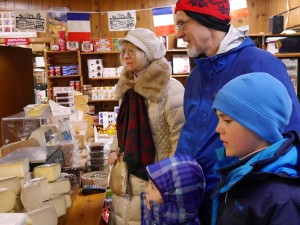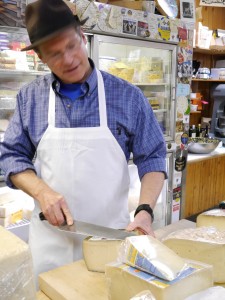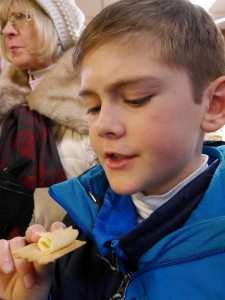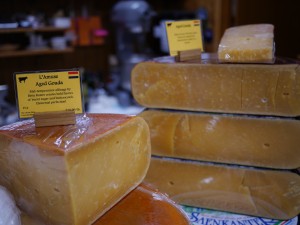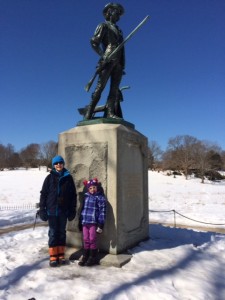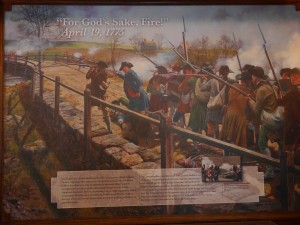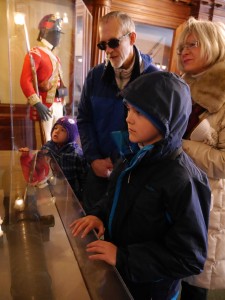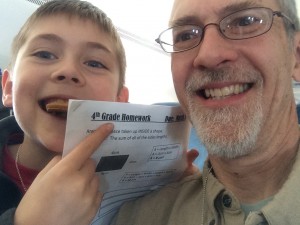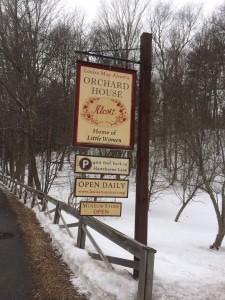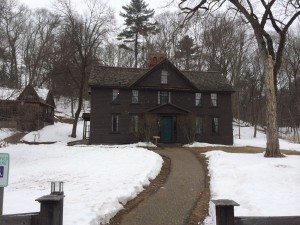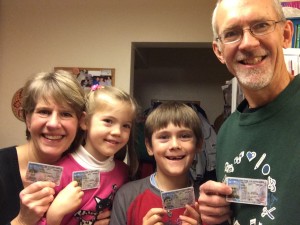By Naomi
Today we visited the Natick Organic Farm in Natick, Massachusetts. This farm was first established way back in 1651 by Rev. John Eliot. We saw 11 piglets, born on Valentine’s Day, and goats, sheep, two cows, bunnies, and chickens. The name of our tour guide was Karen. She and her friends showed us how Maple sap was turned into Maple sugar and syrup, both in olden times by the Native peoples of the region, and by colonists, and also how it’s done today. Because of the cold winter, the sap wasn’t running very much yet, but today it warmed up enough that I got to put my finger out to taste a sample as it was coming out of the tree through the spile (that’s what the metal or wooden tube that they drive into the tree is called) and into the bucket. It tastes like water and you can barely even taste any of the sweetness.
The sap rests in the roots of the tree, and in the spring, when it warms up, it starts running up through the trunk and out through the branches to feed the growing buds. The sap is almost all water (97%) and only a tiny bit sugar (3%), so you have to boil it a long, long time before it becomes syrup and even longer to make maple sugar. It takes about 40 gallons of sap to make 1 gallon of syrup. And another thing is, a tree can’t start sharing its sap until it’s 40 years old (so the number 40 is the magic number for sap).
When we were learning about olden times, the guide needed a volunteer, and that was me! I stood up and he placed a yoke on my shoulders, and then put a bucket on each end of the yoke. A yoke is a long piece of carved wood that you put on your shoulders. Then he pushed down on the yoke and asked me to take some steps to see how heavy it would be to carry if the buckets were full. It was very, very heavy…but I would be able to do it.

